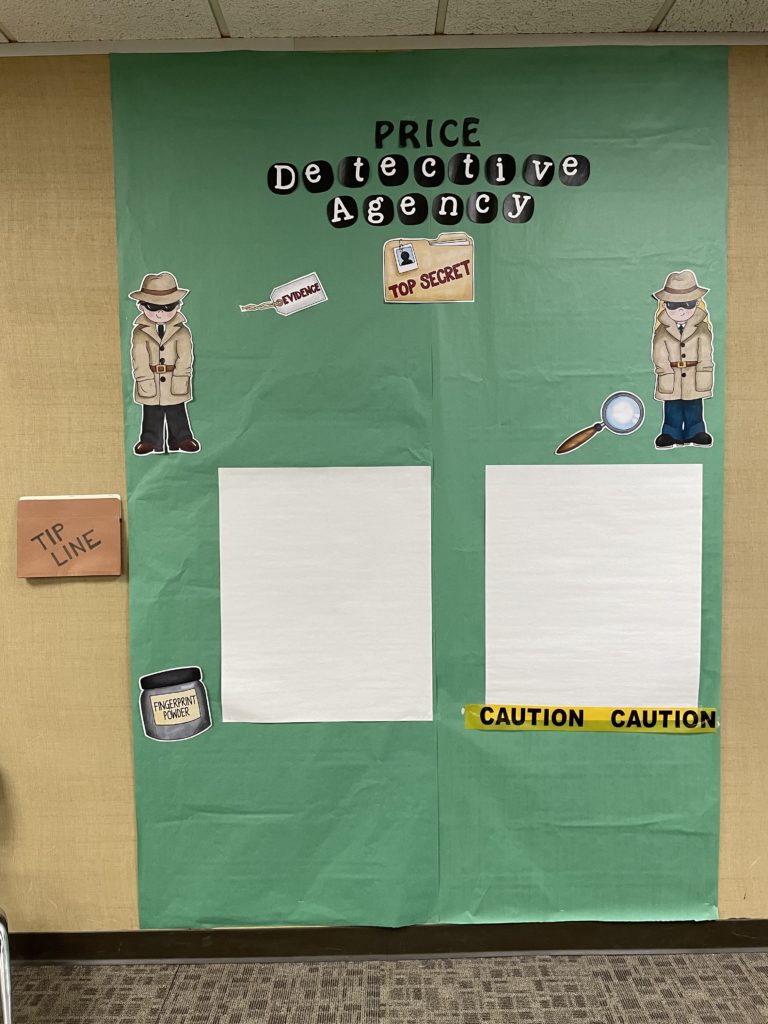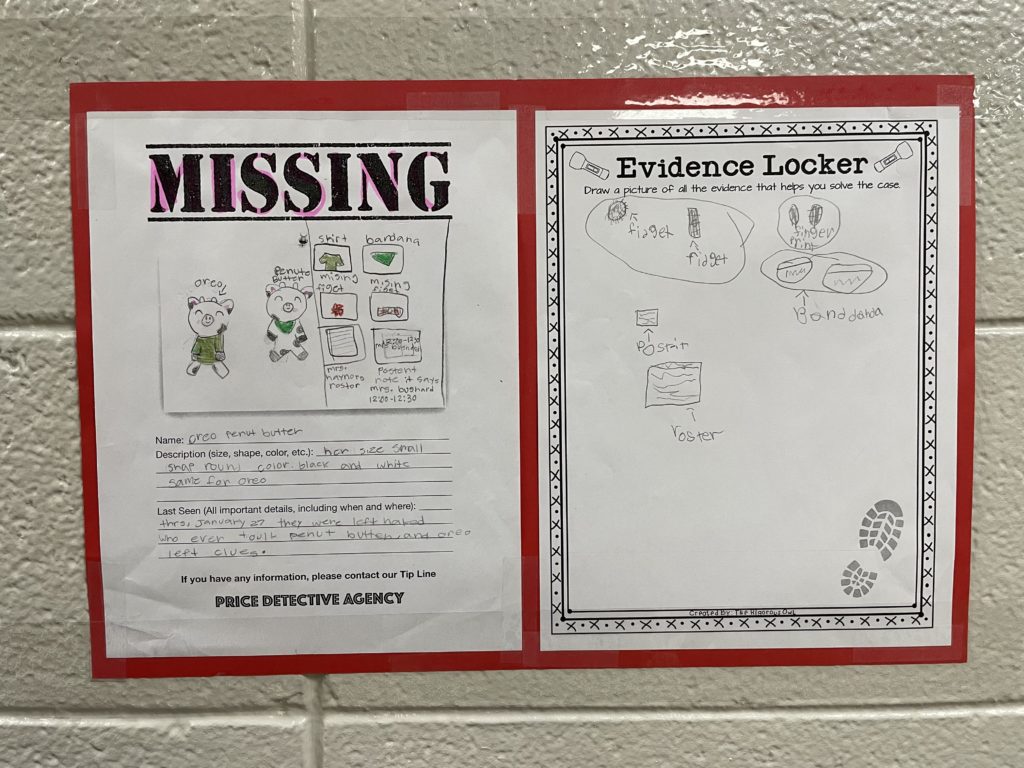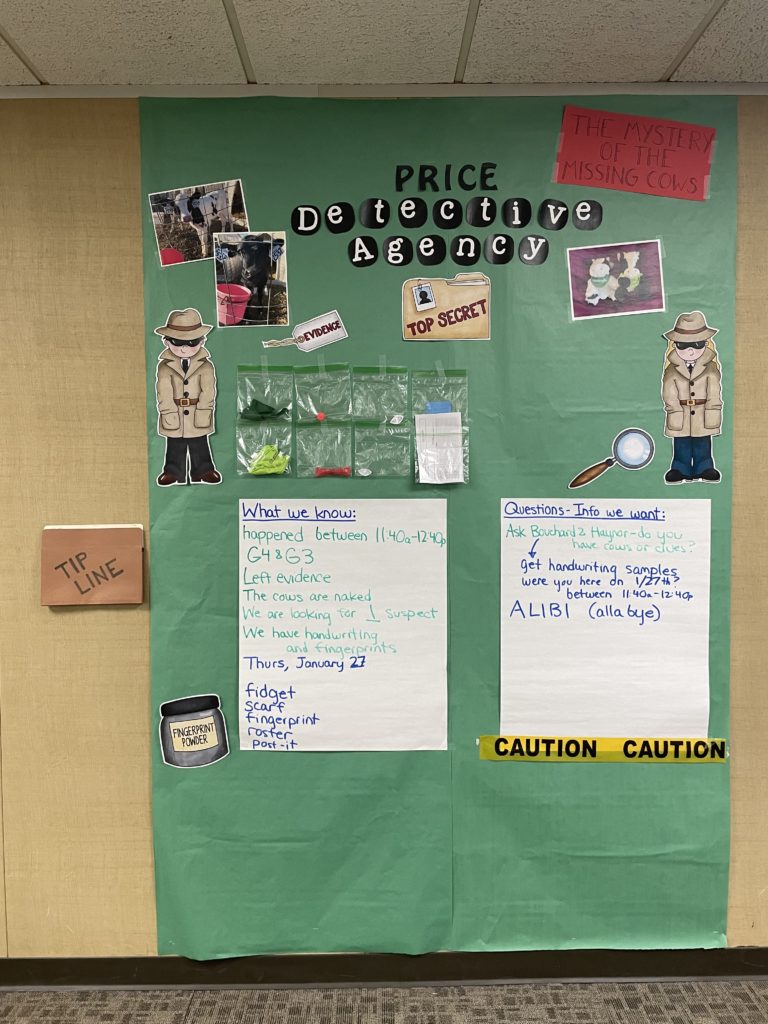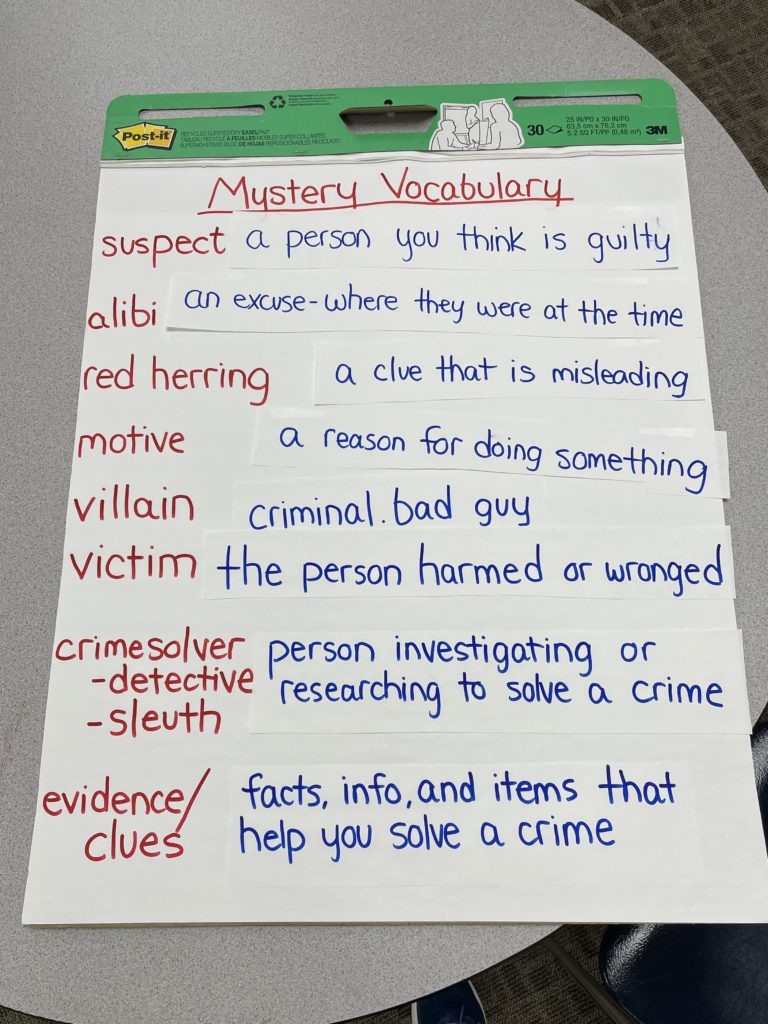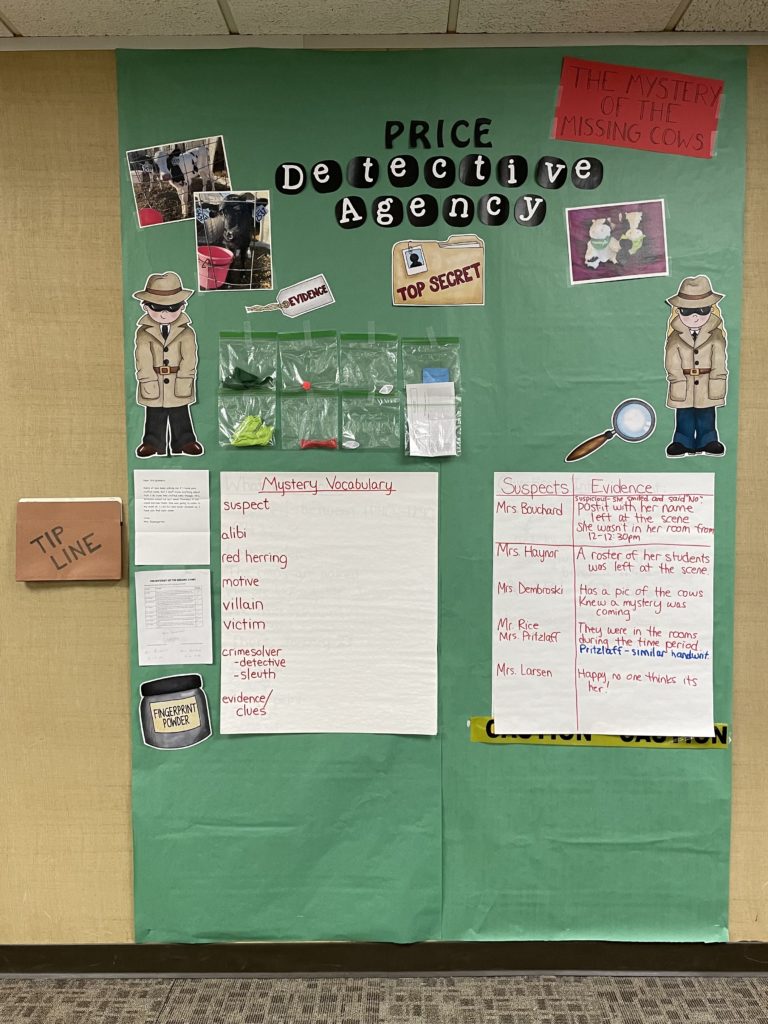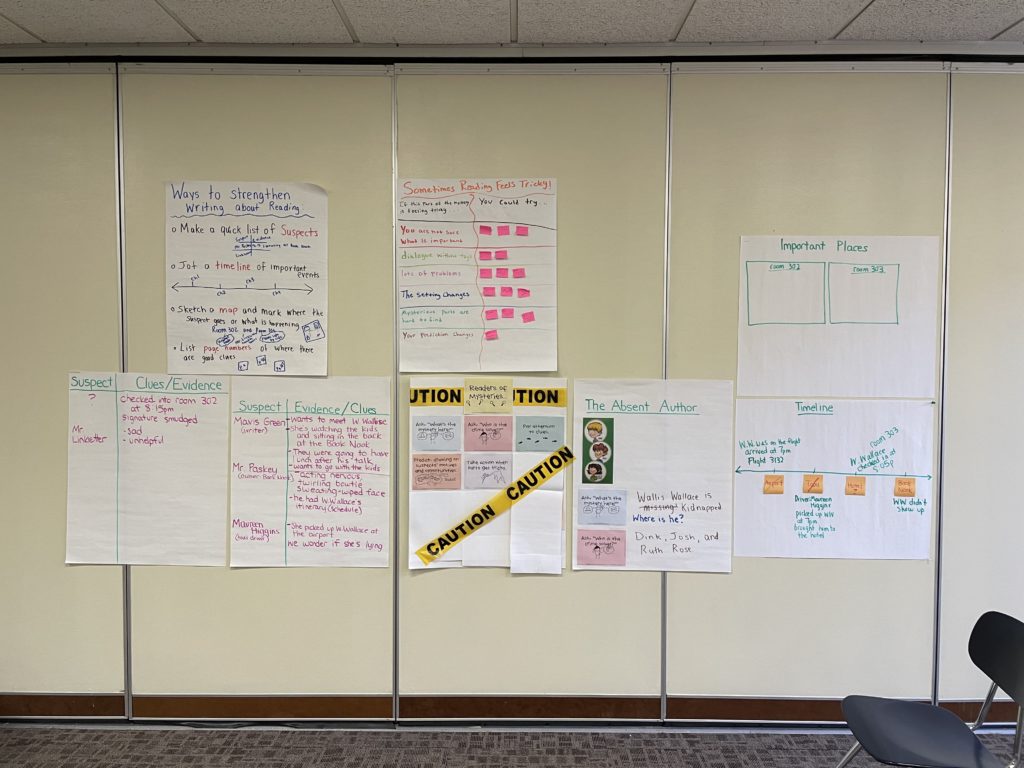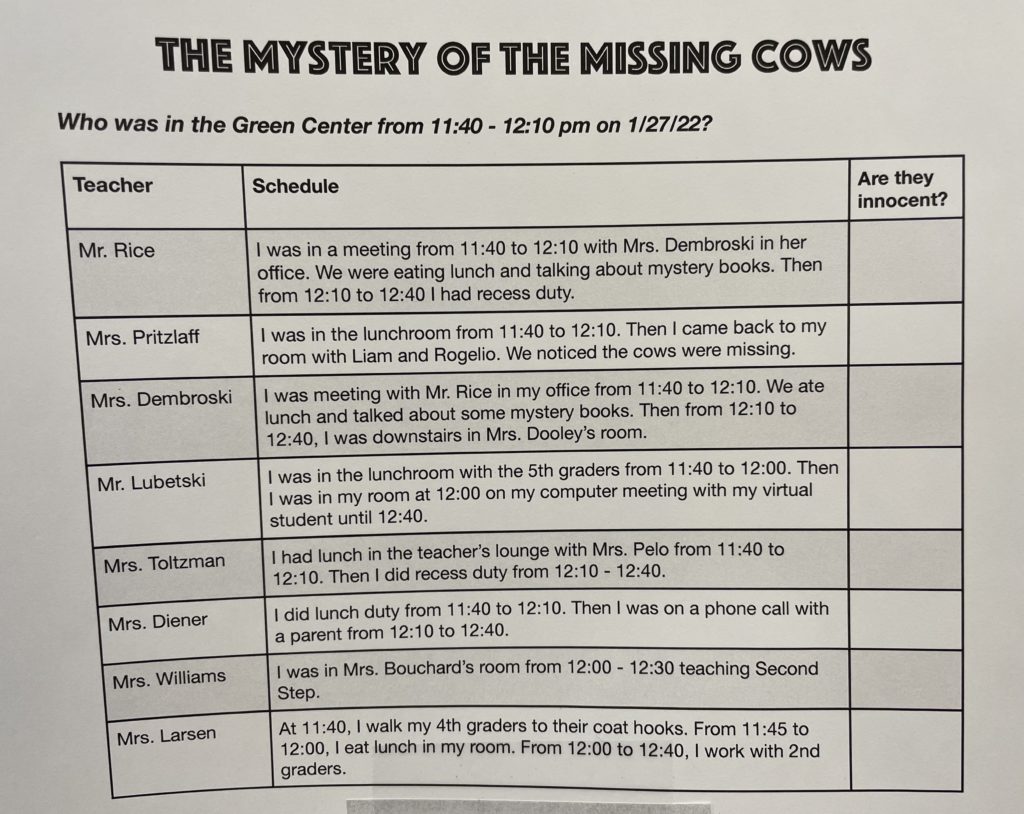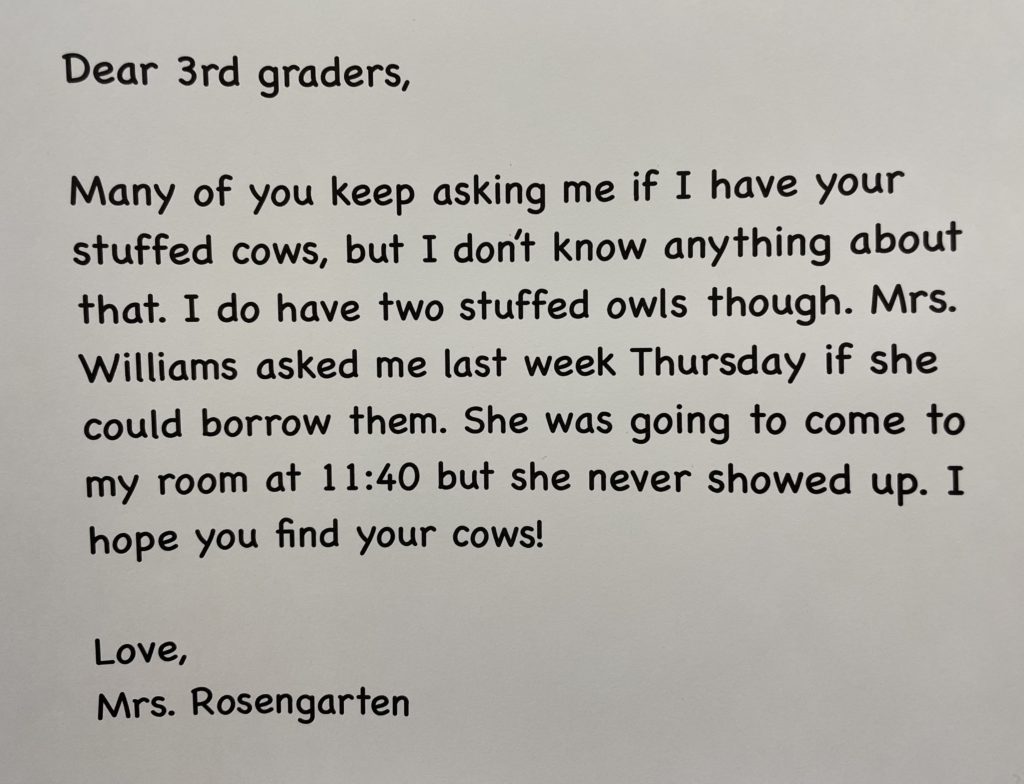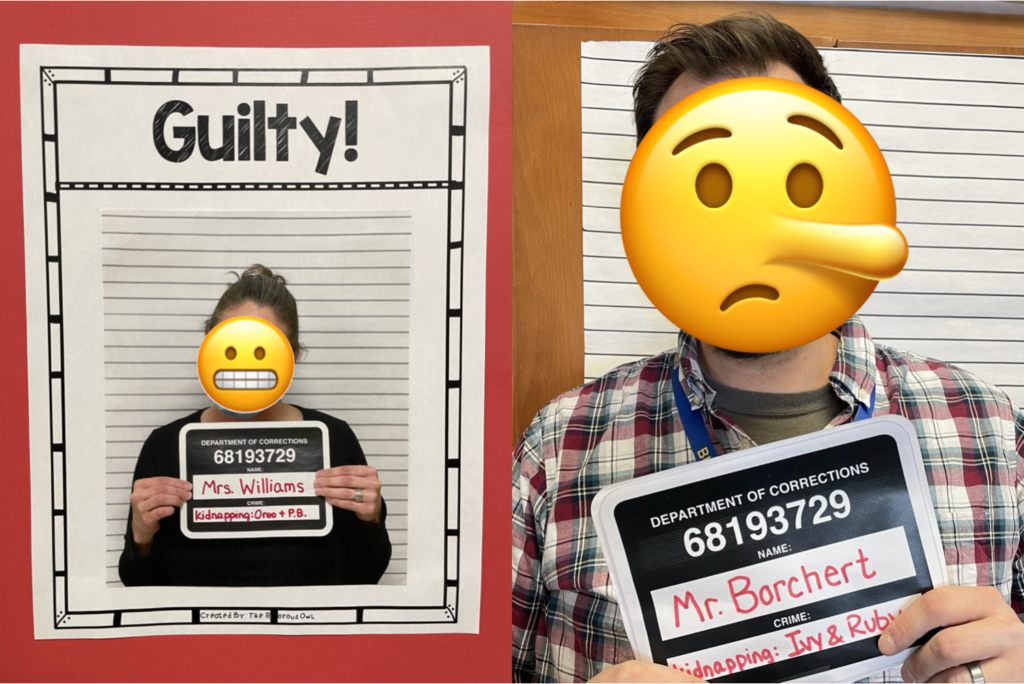May
2023
Bringing your Mystery Genre Unit to Life!
One of my favorite reading genres to study with students is the mystery genre. Students are naturally very curious, and they quickly become hooked on the hunt for details that could break open the case. Students love the challenge of engaging their deductive reasoning skills in order to solve the mystery before the main character. There is also a lot of fun mystery vocabulary and lingo to learn, and they become experts at taking notes and studying the patterns of the genre.
So what could be more fun than bringing the genre to life by staging our very own classroom mystery? I love a fully immersive experience, and it’s certainly something our students will never forget! If you are teaching a mystery unit, this is an opportunity with your students that you won’t want to miss!
Every year, I engage in a coaching cycle with the 3rd grade team in my building during our Mystery Genre unit. There are two 3rd grade classes, and each class has adopted a cow as part of the Discovery Dairy program. In addition to 2 real life cows that live on the farm, the classrooms also have stuffed cow mascots, which have become very dear to the students. Because “Oreo” and “Peanut Butter” are so beloved and constantly watched over, I knew they were the perfect victims for my staged mystery. With the team’s permission, I set a plan into motion to kidnap the classroom cows!
I did a little internet sleuthing and came across the incredible and hilarious duo at The Rigorous Owl. In their blog post, they share how they staged a real life mystery and forensics unit for their 4th grade students. I immediately went to Teachers Pay Teachers to buy their Detective and Mystery Unit Bundle. This product has a ton of ideas, and I pared it down to a more manageable mini-unit to do with our 3rd graders. My first step was to get the students very curious and suspicious by creating this bulletin board in our common space. I combined the names of the 2 classroom teachers to create the “Price Detective Agency.” All of the art below is from the Rigorous Owl, with the addition of some caution tape I requested from the custodians. The students could not stop talking about it and asking questions. I knew we had gotten their attention.
Next, I secretly surveyed the other staff members in our school to see who would be willing to play the part of the kidnapper. It had to be someone that all the 3rd graders would recognize and interact with, someone who could keep a secret and a straight face, and someone who would be game for some extra fun. In my first year doing this activity, the guidance counselor agreed to be our bad guy, and the second year, it was our art teacher.
I asked the ‘kidnapper’ if I could borrow a few artifacts that could be left behind as clues at the scene. They needed to be items that were small, connected to the staff member in some way, but not incredibly obvious (like a whistle for the Phy-Ed teacher). The ‘kidnapper’ MUST leave behind something with their handwriting on it. For the guidance counselor, she left behind some fidgets, a post-it note with her handwriting, and a roster. For the art teacher, he left behind some craft supplies and a copy of the specialists’ schedule with his handwriting on it. I also left a partial fingerprint at the scene (from The Rigorous Owl materials), which we would later analyze against our final suspects’ full fingerprints (I’ll explain that later).
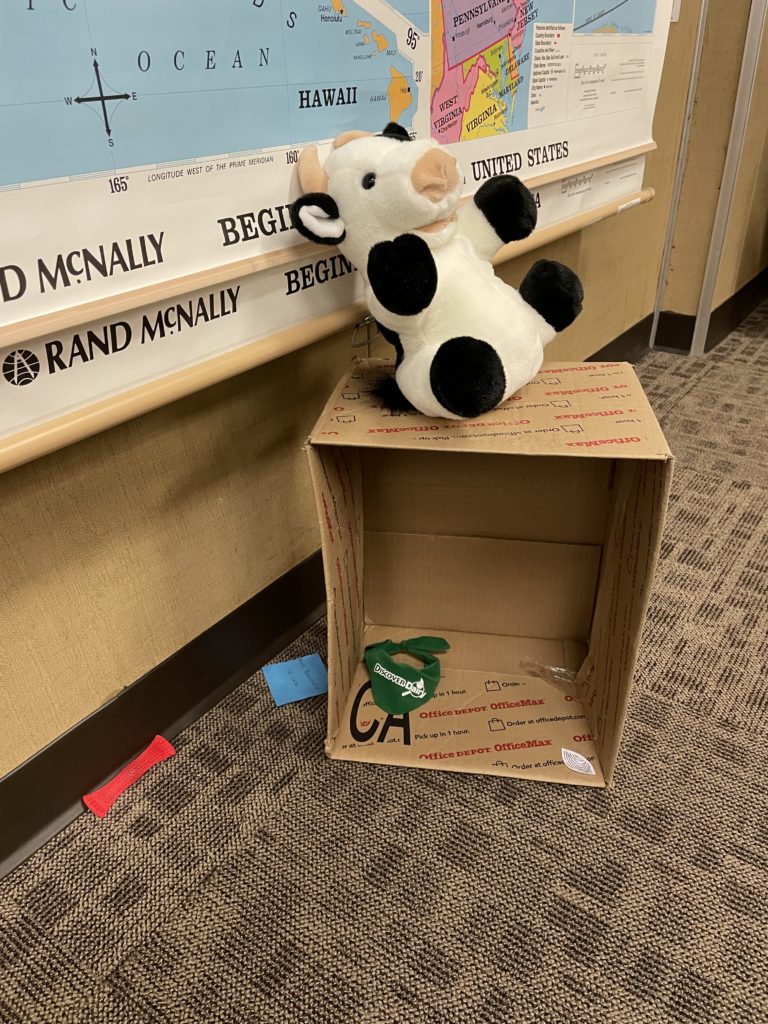
Once I’d set up the bulletin board and prepped the kidnapper for their role, it was time to kidnap the cows. I cross checked the schedules for a time when the students would be out of the room (recess, lunch) and when the kidnapper had an opportunity in their schedules. When we analyzed the timeline and alibis later, this was key. I went in, stole the cows, left behind the clues, and then waited for the students to return. They did not disappoint! It was mayhem when they returned to find their beloved mascots……. gone!
As soon as possible, I debriefed with the class. We cataloged all of the evidence we’d collected and we created a timeline of events. That way, we knew exactly when the cows went missing, which we could analyze later. I invited the students to create a ‘Missing Poster’ and ‘Evidence Locker’ to advertise around the school. I created the Missing Poster worksheet on my own, and the Evidence Locker is from the Rigorous Owl materials. I explained that we were all detectives on the case, and I would be their lead detective.
Each student was very excited to create their own super sleuth detective name and badge (Rigorous Owl materials). And of course our mystery case needed a name, just like our books. This one was creatively dubbed “The Mystery of the Missing Cows.” I explained that we would analyze our evidence as a class, and the students could send me on missions to collect information and answers to their questions. We also had a ‘Tip Line’ to receive anonymous tips.
In our detective briefings, I suggested we begin with a staff directly that lists all of the names of adults in the building. Using evidence and deductive reasoning, we slowly whittled down the list over a series of days (about 6 15-minute meetings spread out over 2 weeks). I promised them that when they had the list of suspects narrowed to 4 or fewer staff members, I would go out and collect the suspects’ handwriting and finger prints for analysis (the fingerprint activity is part of the Rigorous Owl materials).
Simultaneously, we continued to engage in the mystery novel read aloud with accountable talk as a class. We studied a mystery book together, plotted our evidence, took notes, created theories, and learned mystery lingo. All the while, I was careful to point out the connections across our book and our real life classroom mystery.
To solve our Mystery of the Missing Cows, students sent me on missions to find out things like which staff members were absent or out of the building on the day in question, to survey staff with specific questions and collect their alibis, to determine which staff members had specific items in their classrooms, and so on. The kidnapper’s alibi typically stood out because it didn’t cover the entire time period in question, or it wasn’t very confident (“I think I was in…”), or they were by themselves and their alibi couldn’t be verified.
We also got anonymous tips in our Tip Line when it seemed like the students needed a nudge. For example, a staff member (aka me in disguise) wrote something like, “I think I saw a male teacher leaving your room…” or “Mrs. W. never showed up to our Second Step lesson on Thursday” or “When I asked so-and-so about it, they got really red and quiet…”).
Every day we took stock of our clues and data to determine next steps. Once we had the list of suspects narrowed to 3 or 4 names, I made a final forensic analysis worksheet that contained the suspects’ handwriting samples I had collected and full fingerprints (from the Rigorous Owl materials). The students cross checked these with the partial fingerprint and handwriting left at the scene.
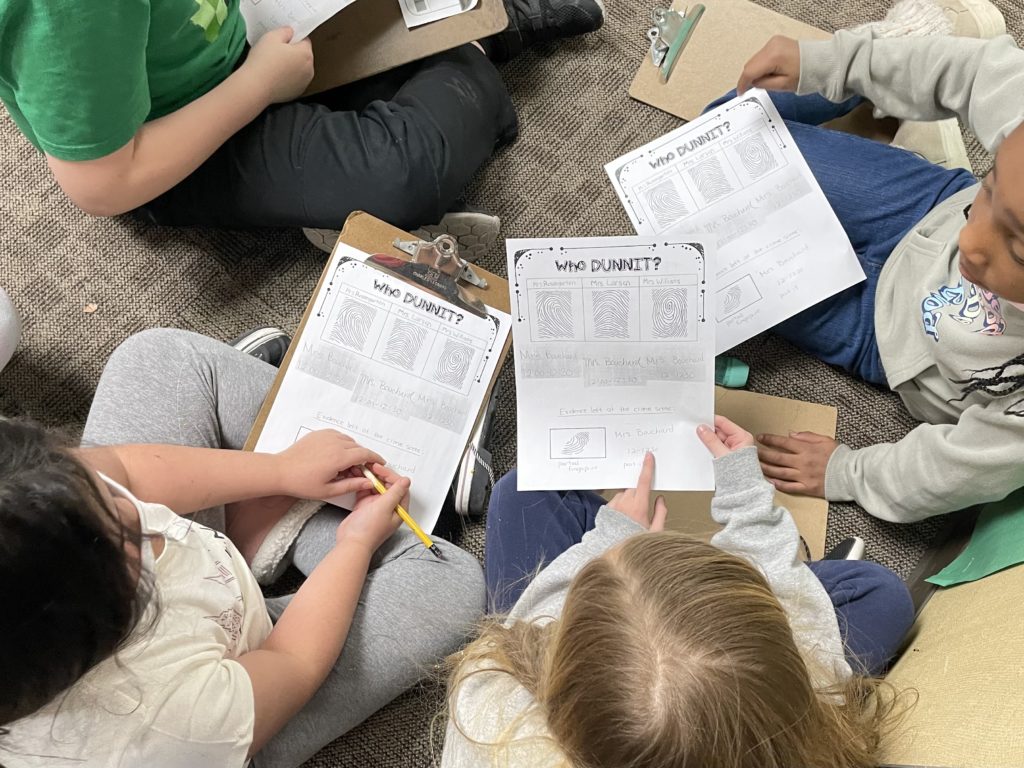
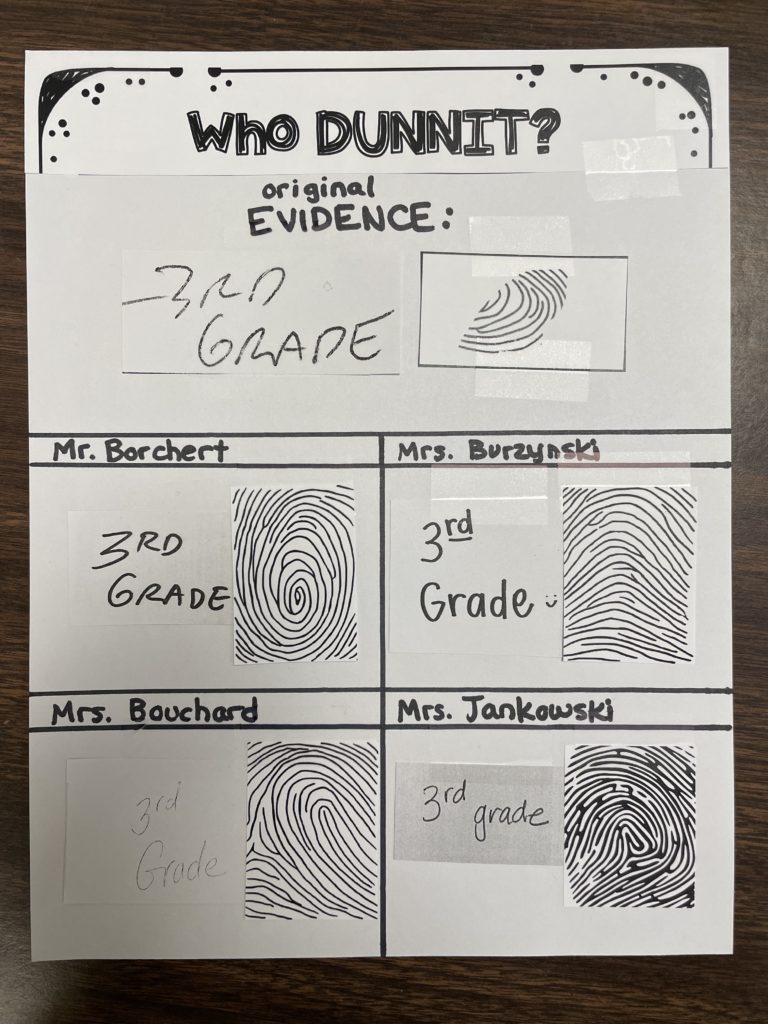
Based on the forensics, the students were able to name their final suspect, and they were ready to rescue Oreo and Peanut Butter. But the learning did not end here! Each student completed a graphic organizer in which they named the final suspect and provided 3 reasons / evidence to support their claim (starting to sound like a persuasive writing assignment? You’re right!). Then, in strategic small groups or partnerships, the students wrote a persuasive letter to our school’s acting authority, the principal, appealing for help to recover their beloved Oreo and Peanut Butter and bring the culprit to justice.
After careful consideration of the documentation and after interviewing the class, the principal agreed to go to the kidnapper’s room, provide a District Court Application for a Search Warrant (from Rigorous Owl materials), search for and recover the missing cows, and finally to read the culprit their Miranda Rights (Rigorous Owl). Then, I ‘booked’ them, took their mugshot, and posted it on our Mystery Bulletin Board. CASE CLOSED!
There’s just one last step to bring this unit to a close; the students deserved an explanation and some closure from the kidnapper. This explanation would also serve as the kidnapper’s motive. For the guidance counselor, she explained that she needed to borrow the cows in order to teach a Second Step Guidance lesson for the younger students. For the Art Teacher, he explained that he wanted to add it to his soft sculpture collection for a project with another grade. Both teachers explained that they didn’t mean to steal the cows, just to borrow them, and that they were sorry they forgot to ask first or return them. Finally, we “made it right” by bringing in an apology treat, which also served to celebrate closing our case. In the end, the 3rd graders got that this was all in good fun, that no one meant any harm, and that it was all just a big ruse. No cows were harmed!
The links again are to The Rigorous Owl blog and their Detective and Mystery Unit Bundle.
I hope you enjoyed reading about our annual Mystery of the Missing Cows! I would love to hear how you bring the mystery genre to life, and any tips or tricks you have for enjoying this exciting genre study.
![]()

